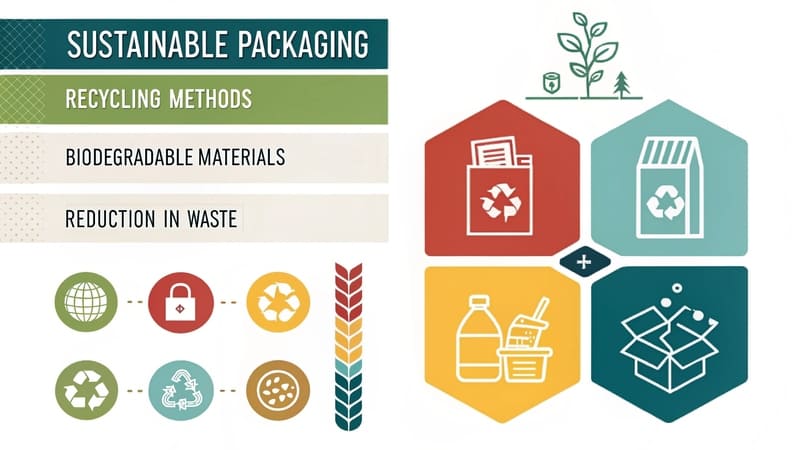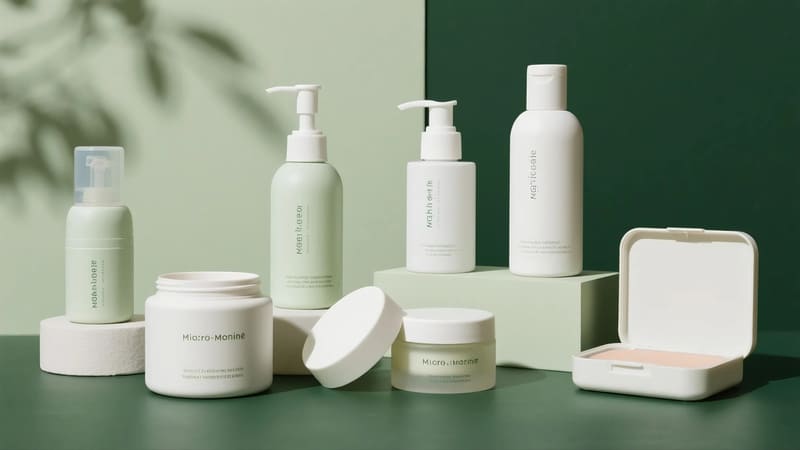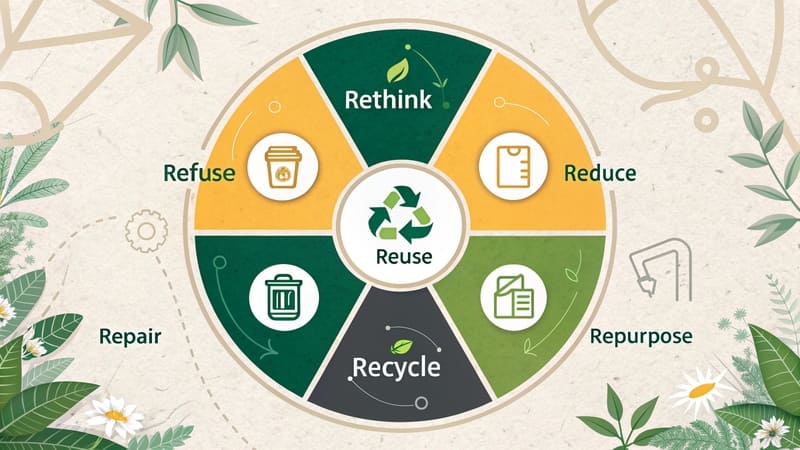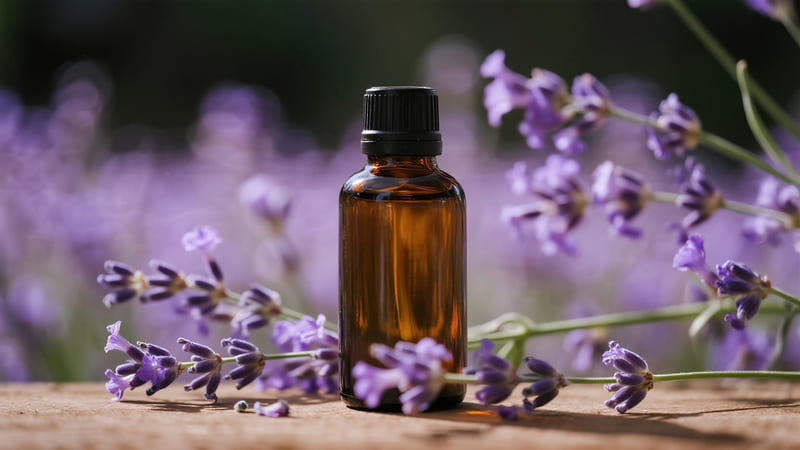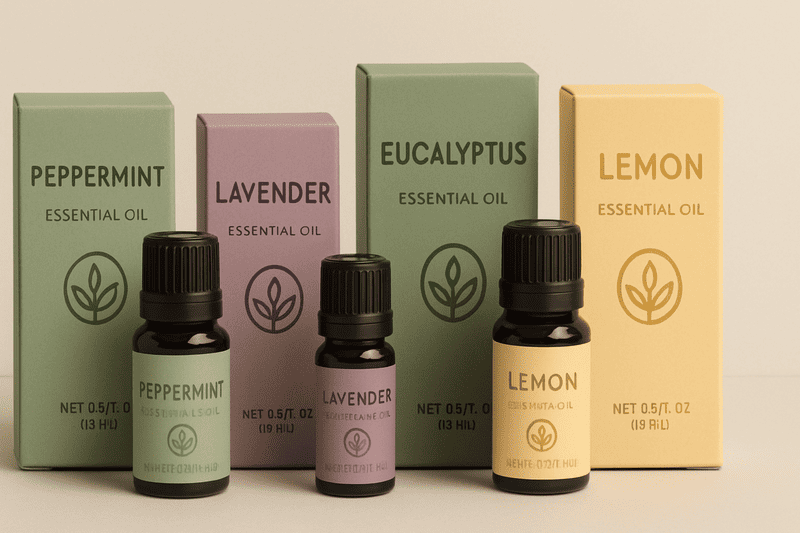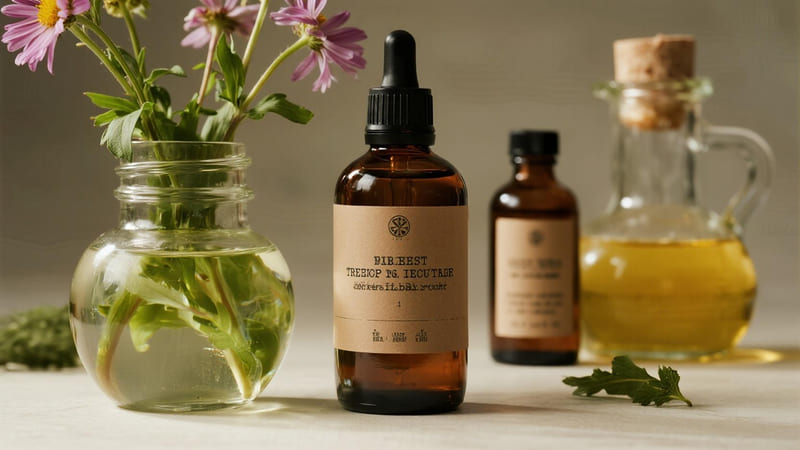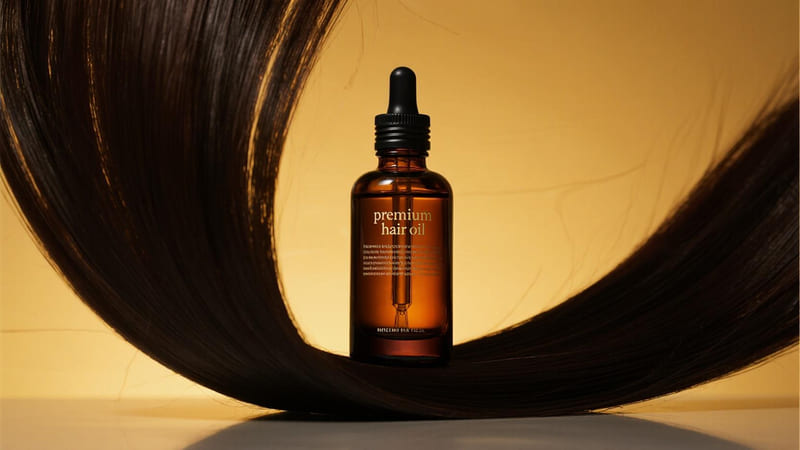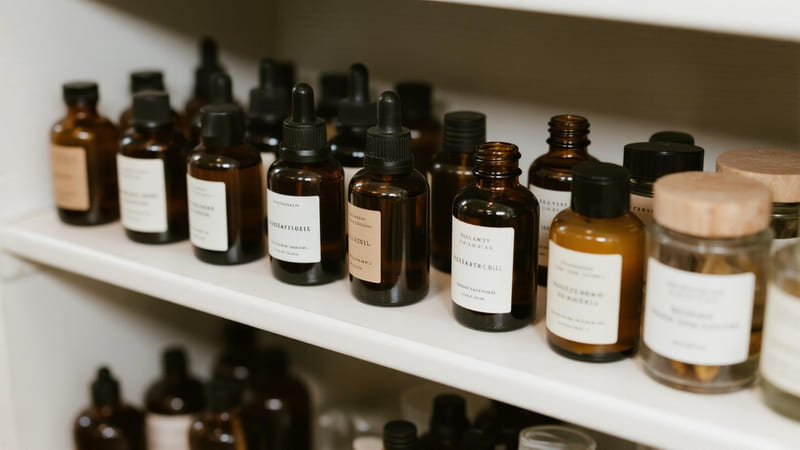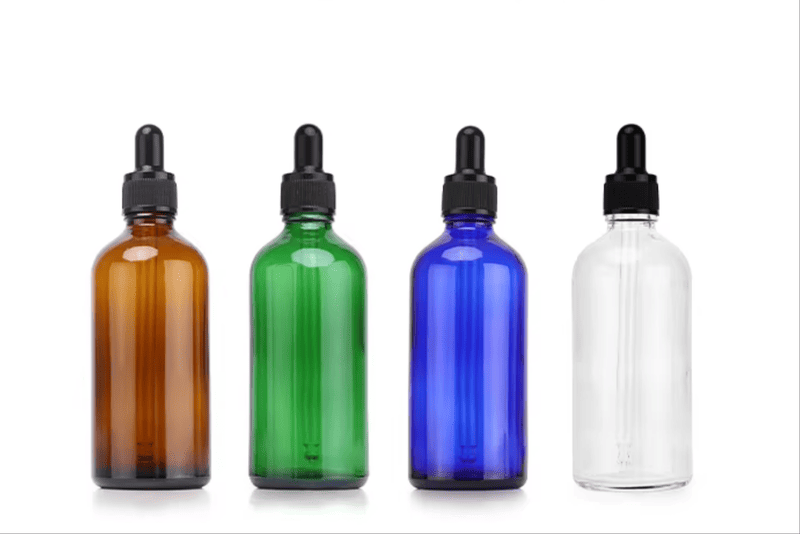Making your cosmetic packaging more sustainable is a fantastic goal, aligning your brand with growing consumer demand for eco-conscious products and contributing to a healthier planet. It’s a journey that involves thoughtful choices about materials, design, and end-of-life considerations.
To make your cosmetic packaging more sustainable, prioritize the waste hierarchy: Reduce material usage, implement Reuse/Refill systems, and choose materials with high Recycled content that are also easily Recyclable. Additionally, opt for renewable resources, consider certified compostable options where appropriate, and educate consumers on proper disposal.
As a global packaging manufacturer with ShineTop for over 20 years, we’ve been actively partnering with brands to navigate this transition. It’s not just about a single material change, but a holistic approach to your packaging strategy. Let’s explore how you can make a real difference.
How to Make Your Packaging More Sustainable?
The journey to more sustainable packaging involves several key strategies that can be applied across various product types, including cosmetics. It’s about making conscious choices at each stage of the packaging lifecycle.
To make your packaging more sustainable: 1. Reduce overall material use (lightweighting, minimalism). 2. Design for Reuse and Refill. 3. Utilize materials with high Recycled content (PCR). 4. Ensure your packaging is easily Recyclable (mono-materials, clear labeling). 5. Choose Renewable resources (FSC paper, bio-plastics). 6. Consider certified Compostable options where suitable. 7. Rethink your packaging system entirely.
Making packaging more sustainable is a multi-faceted endeavor. Here’s a breakdown of actionable steps:
-
Reduce Material Consumption (Source Reduction):
- Minimalist Design: Eliminate unnecessary layers, inserts, or oversized packaging. Does every product need an outer box?
- Lightweighting: Work with suppliers like ShineTop to decrease the thickness or weight of your materials (glass, plastic, paperboard) without compromising protection.
- Concentrated Formulas: If your product can be concentrated, it requires smaller packaging.
-
Prioritize Reuse & Refill Systems:
- Design durable, attractive primary containers that consumers want to keep.
- Offer refills in simpler, lower-impact packaging (e.g., lightweight pouches, glass vials, solid product refills). This is a highly effective strategy.
-
Incorporate Recycled Content:
- PCR (Post-Consumer Recycled) Plastics: Specify PCR PET, HDPE, or PP for bottles, jars, and tubes.
- Recycled Glass & Aluminum: These materials can be recycled multiple times without significant loss of quality.
- Recycled Paperboard: Use for boxes and inserts, looking for high PCW (Post-Consumer Waste) content.
-
Design for Recyclability:
- Mono-Materials: Use a single type of material for each component (e.g., a PET bottle with a PET cap) to simplify recycling.
- Easy Disassembly: If different materials are necessary, ensure they can be easily separated by the consumer.
- Choose Widely Recyclable Materials: Opt for clear PET (#1), natural HDPE (#2), PP (#5 – check local acceptance), glass, and aluminum.
- Avoid Problematic Elements: Minimize dark/black plastics, non-recyclable laminates, problematic adhesives, or labels that contaminate the recycling stream.
-
Select Renewable Resources:
- FSC-Certified Paper/Paperboard: Ensures wood fibers come from responsibly managed forests.
- Bio-Based Plastics: Such as sugarcane PE (recyclable with PE) or PLA (industrially compostable).
- Other Renewables: Bamboo, cork, or agricultural waste-derived materials.
-
Explore Certified Compostable Options (Judiciously):
- Suitable for specific applications where recycling is difficult or product residue is an issue.
- Ensure certification (e.g., BPI, TÜV Austria OK compost HOME/INDUSTRIAL) and that appropriate composting infrastructure is available to your consumers.
-
Educate Consumers:
- Provide clear on-pack instructions on how to properly dispose of, recycle, or compost the packaging.
Anna, a cosmetics client of ShineTop in Thailand, has been working with us to transition her skincare line. We’ve helped her move to PCR PET bottles for her cleansers and lightweighted glass for her serums, all housed in FSC-certified paperboard boxes. This holistic approach is making a real difference to her brand’s footprint.
What is the Most Sustainable Packaging for Cosmetics?
The "most" sustainable packaging for cosmetics isn’t a single product or material but rather a system or approach that minimizes environmental impact across the entire lifecycle.
The most sustainable packaging for cosmetics often involves a combination of strategies: prioritizing refillable/reusable systems, followed by mono-material packaging made from high-recycled content (e.g., PCR plastic, recycled glass/aluminum) that is also easily recyclable, or appropriately certified compostable options for specific applications. Minimizing overall material usage (lightweighting) is also key.
Achieving the "most" sustainable outcome requires a thoughtful hierarchy of choices.
Hierarchy of Sustainable Cosmetic Packaging Choices:
-
Refillable & Reusable Systems (Often the Gold Standard):
- Why: Drastically reduces the demand for new single-use primary packaging. The focus shifts to durable, long-lasting primary containers and minimal-impact refills.
- Examples: A beautifully designed glass jar for a face cream with refills sold in lightweight, recyclable pouches or simple pods. ShineTop is developing more innovative refillable solutions.
-
High Recycled Content + High Recyclability:
- Why: This embraces circularity. Using PCR materials reduces virgin resource depletion, and designing for easy, effective recycling ensures the material can have another life.
- Materials:
- Glass: Excellent; choose options with high recycled cullet content.
- Aluminum: Excellent; high recycled content is common.
- PCR Plastics (PET, HDPE, PP): Aim for high PCR percentages in mono-material designs.
- FSC-Certified & Recycled Paperboard: For secondary boxes.
-
Mono-Material Design:
- Why: Simplifies the recycling process significantly. A PET bottle with a PET cap and a compatible PET label is far easier to recycle than a mixed-material assembly.
-
Lightweighting & Minimalism:
- Why: Using less material directly translates to fewer resources consumed and lower transportation emissions.
-
Responsibly Sourced Renewable Virgin Materials:
- Why: If virgin materials are unavoidable, ensure they come from sustainable sources (e.g., FSC-certified paper, bio-plastics from non-food crop waste or sustainably farmed sugarcane).
-
Certified Compostable Packaging (for Niche Applications):
- Why: Can be beneficial for items that are hard to clean for recycling (e.g., some food-contaminated packaging, though less common for cosmetics) or for single-use items where composting is a viable end-of-life option for the target consumer.
- Caution: Must be certified and have access to appropriate composting facilities.
The "most sustainable" option for a specific cosmetic product will depend on its formulation (e.g., barrier needs), shelf-life requirements, brand positioning, and the recycling/composting infrastructure available to its end consumers.
What are the 7 R’s of Sustainable Packaging?
The "3 R’s" (Reduce, Reuse, Recycle) are well-known. However, a more comprehensive framework often includes up to seven "R’s" to guide more holistic sustainable packaging strategies.
The 7 R’s of Sustainable Packaging typically include: Rethink, Refuse, Reduce, Reuse (and Refill), Repair (less applicable to primary packaging, more to systems), Repurpose, and Recycle. Some frameworks may vary slightly (e.g., adding Rot/Compost or Recover).
This expanded framework encourages a deeper level of critical thinking about packaging choices.
Exploring the 7 R’s for Cosmetic Packaging:
-
Rethink:
- Challenge conventional packaging norms. Is this packaging truly necessary? Can the product be delivered differently (e.g., solid form instead of liquid)? Can the design be fundamentally more efficient or circular? This is about innovation at the core.
-
Refuse:
- Refuse unnecessary packaging components or problematic materials (e.g., single-use plastic applicators if a reusable alternative exists, materials known to be non-recyclable or harmful).
- Refuse over-packaging from suppliers.
-
Reduce:
- Minimize the amount of material used per package (lightweighting).
- Eliminate secondary packaging where feasible.
- Opt for concentrated formulas requiring smaller packs.
-
Reuse (and Refill):
- Design packaging for multiple uses by the consumer (e.g., a beautiful jar that can be repurposed).
- Implement refillable systems where the primary container is reused, and refills are purchased. This is a cornerstone of sustainable cosmetic packaging.
-
Repair:
- More applicable to reusable dispensing systems or retail displays rather than individual consumer packaging. Can a pump mechanism be repaired rather than replaced?
-
Repurpose (Upcycle):
- Design packaging that consumers might want to repurpose for other uses after the product is finished (e.g., an elegant rigid box for storage, a beautiful jar as a small vase). This extends the life of the materials.
-
Recycle:
- Design for recyclability using mono-materials or easily separable components.
- Use materials with high recycled content (PCR).
- Clearly label packaging with recycling instructions for consumers.
(Some frameworks add Rot (Compost) for organic materials/certified compostable packaging, or Recover for energy recovery from waste, though this is lower on the hierarchy).
Applying these 7 R’s helps brands develop a comprehensive and impactful sustainable packaging strategy. Mohammed, my client from Iraq who creates luxury gift sets, is starting to "Rethink" his inserts, moving from foam to custom-molded recycled pulp, and "Repurpose" by designing his rigid boxes to be beautiful keepsake items.
What are Some Ideas for Sustainable Packaging?
Moving beyond general principles, let’s look at some concrete, innovative ideas that cosmetic brands can implement to make their packaging more sustainable.
Sustainable packaging ideas for cosmetics include: offering solid product alternatives (shampoo bars, solid serums), implementing robust refill programs with minimal refill packaging, using plantable seed paper for labels or dust covers, choosing mono-material airless pumps, opting for glass/aluminum with high PCR content, and designing multi-functional packaging that encourages a second life.
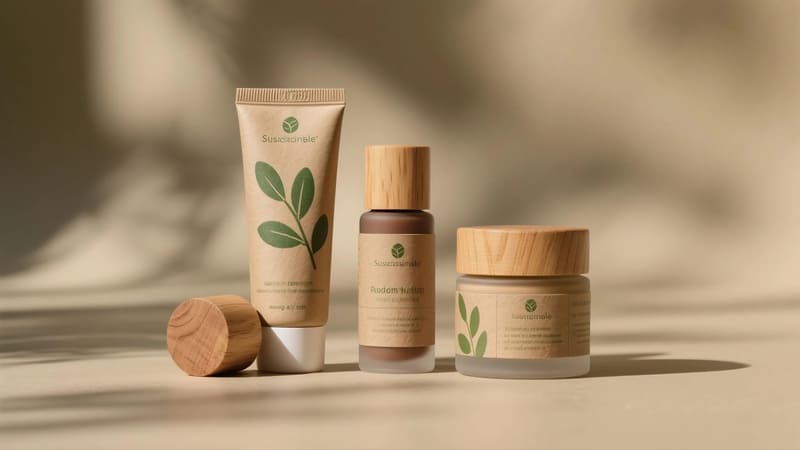
Innovation is key to pushing the boundaries of sustainable packaging.
Creative & Practical Sustainable Packaging Ideas:
-
Solid Formulations:
- Shampoo bars, conditioner bars, solid facial cleansers, solid moisturizers, solid serums, and makeup sticks often require minimal or no plastic packaging (e.g., a simple paper wrap or a small recyclable tin).
-
Refillable Systems with Innovative Refills:
- Lipsticks: A durable, beautiful outer case with replaceable inner lipstick bullets.
- Compacts (Powder/Eyeshadow): Magnetic systems allowing consumers to buy individual pans to refill a palette.
- Skincare Jars/Bottles: With inner pods or cartridges that can be replaced. Refills could be in lightweight glass or recyclable mono-material plastic pouches.
-
Plantable Packaging:
- Labels, dust covers, or even small boxes made from biodegradable paper embedded with seeds (flowers, herbs). After use, the consumer can plant the packaging.
-
Mono-Material Innovations:
- Development of airless pumps or complex closures made entirely from a single type of recyclable plastic (e.g., all-PP or all-PE). ShineTop is actively researching such solutions.
-
Glass & Aluminum with a Twist:
- Lightweighted glass to reduce transport emissions.
- Aluminum bottles or tubes as alternatives to plastic, especially if they can be easily refilled or are designed for high recycling rates.
-
Bamboo & Cork Accents or Containers:
- Using these renewable materials for caps, lids, or even full containers for a natural, premium, and eco-friendly aesthetic.
-
Molded Pulp Inserts & Packaging:
- Made from recycled paper or other plant fibers, these can replace plastic or foam inserts. They are compostable and can be molded into custom shapes.
-
"Naked" Packaging or Minimal Wraps:
- For products that are stable and don’t require extensive protection (like some soap bars or bath bombs), consider minimal paper wraps or even selling them "naked" with just a small tag.
-
Water-Soluble Pods/Films (for single-use items):
- For items like bath bombs or single-dose treatments, if the film is truly biodegradable in water without releasing harmful residues.
-
Digital Integration for Reduced Paper:
- Using QR codes to link to extensive product information, tutorials, and ingredient lists online, reducing the need for printed inserts and larger boxes.
The key is to match the idea with your brand ethos, product requirements, and your target consumer’s ability and willingness to participate in the sustainable end-of-life option (e.g., refilling, composting, proper recycling).
Conclusion
Making your cosmetic packaging more sustainable is an essential journey for modern brands. By embracing the principles of Reduce, Reuse/Refill, and Recycle, utilizing renewable and recycled-content materials, designing for circularity, and exploring innovative ideas, you can significantly lessen your environmental impact. Collaborating with knowledgeable suppliers like ShineTop, who are committed to sustainable solutions, can help you navigate the options and implement packaging that is not only eco-friendly but also beautiful, functional, and aligned with your brand values.


